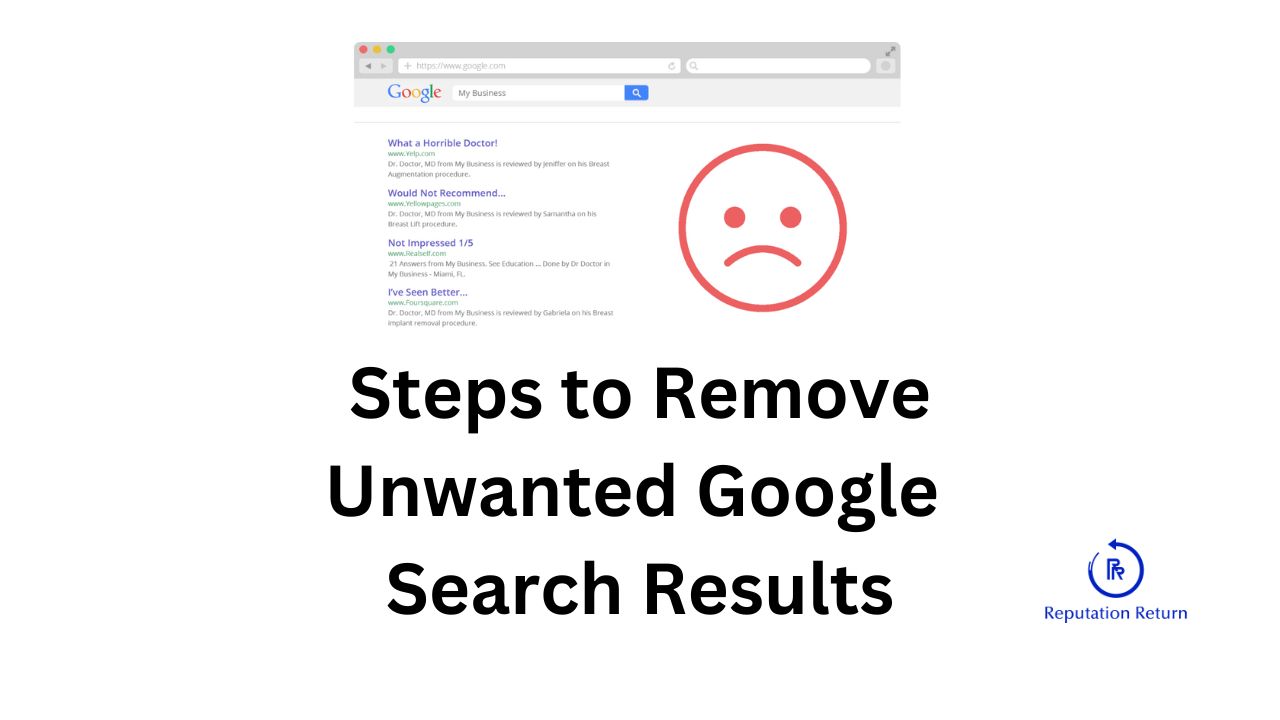It’s BRUTAL! The internet is often the first place people look to when seeking information about someone (you) or something (your business). This can be beneficial, but it also means that negative or unwanted content can easily surface in Google search results, potentially causing personal or professional harm. Whether it’s outdated information, defamatory content, or privacy-invading posts, seeing negative search results can be distressing. Thankfully, there are several steps you can take to address this issue. Here’s a comprehensive guide to help you navigate the process of removing unwanted Google search results.
1. Identify the Problematic Content
The first step is to clearly identify which search results you find undesirable. Make a list of the URLs and note the specific reasons why each link is problematic. This could include incorrect information, outdated content, or personal data exposure.
2. Understand Google’s Removal Policies
Google has specific policies regarding the removal of content. These policies cover:
- Personal Information: Removal of sensitive information such as Social Security numbers, bank account details, or credit card numbers.
- Legal Reasons: Content that violates legal requirements, such as copyright infringement or defamation.
- Outdated Content: Information that is no longer relevant but continues to appear in search results.
Familiarizing yourself with these policies can help you determine whether the content you want removed qualifies under Google’s guidelines.
3. Request Removal from the Source
In many cases, the most effective way to remove unwanted content is to contact the webmaster of the site where the content is published. Here’s how to do it:
- Identify the Webmaster: Use contact information available on the website or perform a WHOIS lookup to find contact details.
- Be Professional and Specific: Clearly explain why the content is problematic and politely request its removal. Provide specific URLs and details to make it easier for the webmaster to locate and remove the content.
4. Use Google’s Removal Tools
Google provides tools for removing specific types of content from its search results. These include:
- Google’s Content Removal Tool: This tool can be used to request the removal of personal information or outdated content. Access it via Google’s Help Center and follow the instructions to submit your request.
- Right to Be Forgotten (RTBF): Available primarily in the European Union, the RTBF allows individuals to request the removal of personal data from search results if it is outdated, irrelevant, or excessive. Fill out the RTBF form on Google’s website to make a request.
5. Submit Legal Requests
If the content violates your legal rights, you can submit a legal removal request to Google. This might involve cases of defamation, copyright infringement, or other legal issues. Google’s Legal Help Center provides forms and detailed instructions for submitting these types of requests.
6. Addressing Negative Reviews or Defamatory Content
Negative reviews or defamatory content can significantly impact your reputation. Here’s how to address them:
- Respond Professionally: If the content is a review or comment, responding professionally and addressing the concerns can sometimes mitigate the negative impact.
- Flagging Inappropriate Content: On platforms like Google Maps or Google Reviews, you can flag inappropriate content for review by Google’s moderation team.
- Legal Action: For defamatory content, legal action might be necessary. Consult with a legal professional to explore your options.
7. Optimize Positive Content
While removing negative content is crucial, it’s equally important to build and optimize positive content. This can help push the negative results lower in the search rankings. Here’s how:
- Create High-Quality Content: Regularly publish blog posts, articles, or other types of content that reflect positively on you or your business. This is one way we help you.
- Engage on Social Media: Active, positive engagement on social media platforms can help improve your online presence.
- SEO Best Practices: Use search engine optimization (SEO) techniques to ensure your positive content ranks higher. This includes keyword optimization, meta descriptions, and quality backlinks.
8. Monitor Your Online Presence
You must stay on top of things and ReputationReturn.com will help. Learn how we can help you legally and ethically removed and suppress unwanted search results.

